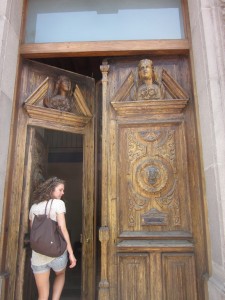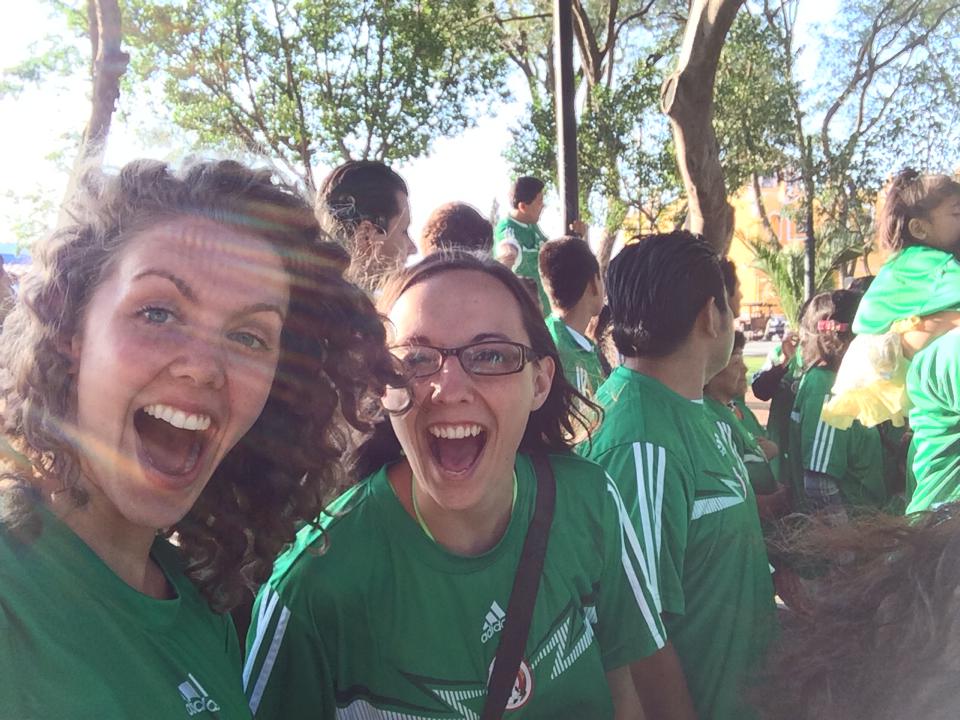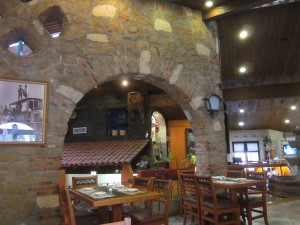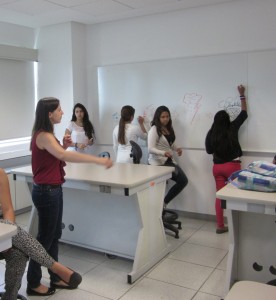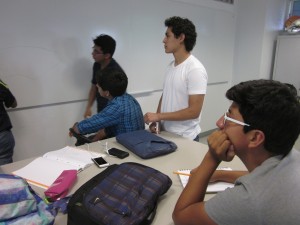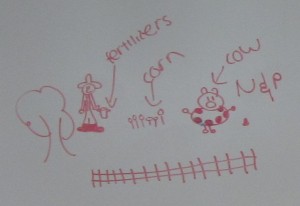With high school classes having coming to a close, we have been given the task of helping run the daycare program for the young children of Tec de Monterrey’s professors. We were asked to prepare some verbal ability activities and some songs for a group of two- to nine-year-olds, and we did, spending most of our time learning the Spanish involved. However, during the actual program, we quickly realized that the group, ranging from two to five years of age, was younger than anticipated, and that the structure was also much looser than we’d expected. We still attempted one of our planned activities, but they had trouble understanding, and quickly lost interest. Instead, we spent a great deal of time playing tag, or “Eres!” Later on, we taught them a few songs with actions (in Spanish, of course). (Here is a link to a video of me singing “Una Sardina”.) A couple of the older kids participated, while the younger ones just watched, entranced. Overall, most of the time was spent in free play, just like at the daycare I worked at in Vancouver.
There were only five kids at the daycare today, which was great because we were able to become acquainted with all of them individually by the end of the day. For safety and security, I will use only their first initials in this blog.
The youngest, R, is two years old and is a very happy little girl. She is quite content to simply imitate the older girls’ activities most of the time, although I did have the chance to play peek-a-boo with her for a little while.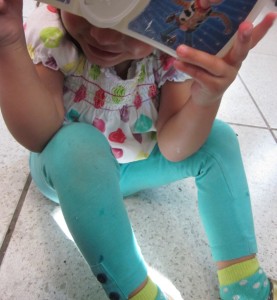 The phrases “Dónde es…?” and “Yo veo!” proved to be very useful, as they can be used to play both peek-a-boo and hide-and-seek.
The phrases “Dónde es…?” and “Yo veo!” proved to be very useful, as they can be used to play both peek-a-boo and hide-and-seek.
Z is three and today was her first day at the daycare. She cried for a long time after her mom left, but eventually calmed down, and even joined in playing tag later in the day.
S was the first to arrive and the first to warm up to me. She is four years old, loves the movie Frozen, and has endless energy, though I was able to convince her to sit still and glue confetti to paper for a while.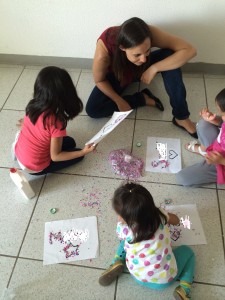 She reminded me of a little boy I worked with back home, in that she quickly became very attached to me, and then refused to play group games because she was jealous that I was giving the other children equal attention. I think this behaviour may simply be a part of learning to share, which includes people as well as things.
She reminded me of a little boy I worked with back home, in that she quickly became very attached to me, and then refused to play group games because she was jealous that I was giving the other children equal attention. I think this behaviour may simply be a part of learning to share, which includes people as well as things.
M, the only boy there today, is also four. He is very intelligent, and likes structured activities, such as the board game similar to Monopoly that he brought with him and knows all the rules to. My favourite moment of the day was probably when we started to teach the English song “Head and Shoulders,” and M quickly became very excited because he already knew it. He sang it for us many times and very rapidly throughout the remainder of the day.
The eldest of today’s group was B, age five. She was fascinated with us as native English speakers. At one point she asked why some of my hair is yellow. I tried to explain how the sun causes highlights, but I don’t know if she understood. The children were also curious about Kristina’s blue eyes.
Working at the daycare today was great fun, but it’s too bad that our planned activities were a no-go. This is a good example of the importance of becoming acquainted with your students before planning lessons for them. Hopefully tomorrow our planning will be more effective, now that we know the kids. I also need to keep learning more Spanish! Although I was able to communicate somewhat effectively with the children there today, there were many moments when I felt like Marlin talking to Squirt (if you don’t understand the reference, click here: https://www.youtube.com/watch?v=nof2FYyIeVg).
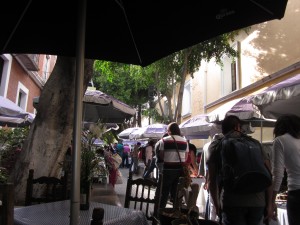 We finished our day where all roads seem to lead in Mexican cities – the zocalo. We wandered the shops and open-air markets, buying the last of our souvenirs and taking in the atmosphere for the last time – on this trip a
We finished our day where all roads seem to lead in Mexican cities – the zocalo. We wandered the shops and open-air markets, buying the last of our souvenirs and taking in the atmosphere for the last time – on this trip a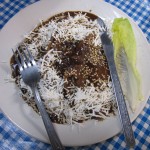 nyways. We had a supper of our favourite Mexican dish, enchiladas con mole poblano, at a cute little restaurant in the middle of a market. Finally, right before leaving, we had a piece of our hair wrapped in the style of the locals as a momento of our incredible Mexico experience.
nyways. We had a supper of our favourite Mexican dish, enchiladas con mole poblano, at a cute little restaurant in the middle of a market. Finally, right before leaving, we had a piece of our hair wrapped in the style of the locals as a momento of our incredible Mexico experience.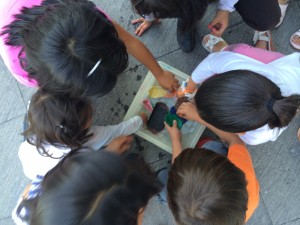
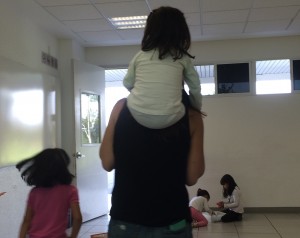
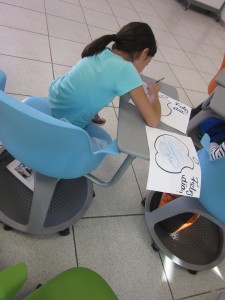 fficulty with the concept of not using one’s hands to play soccer; they would stop the rolling ball with both hands, then kick it. Also, only the two older children were interested in the game, while the younger two amused themselves by crawling through holes in the goal’s net. Once the sunshine and the soccer field had tired them out a little, we took the kids to a volleyball court, where we played catch back and forth over the net and then somehow transitioned into wheelbarrow races. Later, back at the daycare, the children coloured pictures of apples in celebration of Teachers’ Day. Well, most of them did anyways; the two-year-old was too busy ripping the paper off of the crayons.
fficulty with the concept of not using one’s hands to play soccer; they would stop the rolling ball with both hands, then kick it. Also, only the two older children were interested in the game, while the younger two amused themselves by crawling through holes in the goal’s net. Once the sunshine and the soccer field had tired them out a little, we took the kids to a volleyball court, where we played catch back and forth over the net and then somehow transitioned into wheelbarrow races. Later, back at the daycare, the children coloured pictures of apples in celebration of Teachers’ Day. Well, most of them did anyways; the two-year-old was too busy ripping the paper off of the crayons.

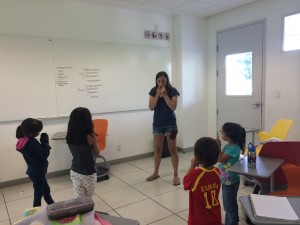
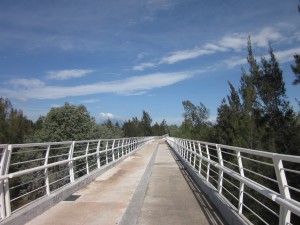 ing, though there are still many Marlin and Squirt moments.
ing, though there are still many Marlin and Squirt moments.

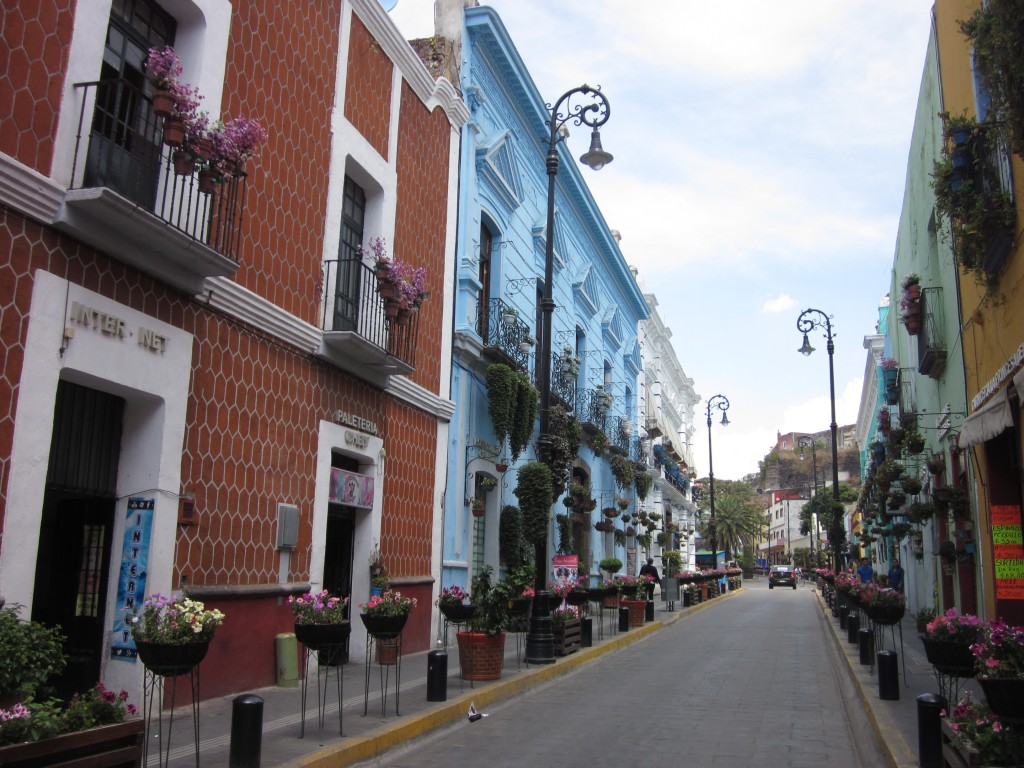


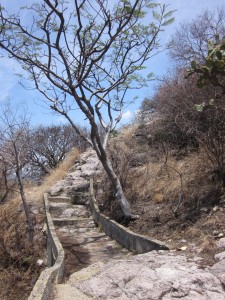
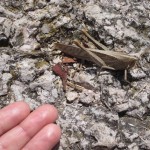
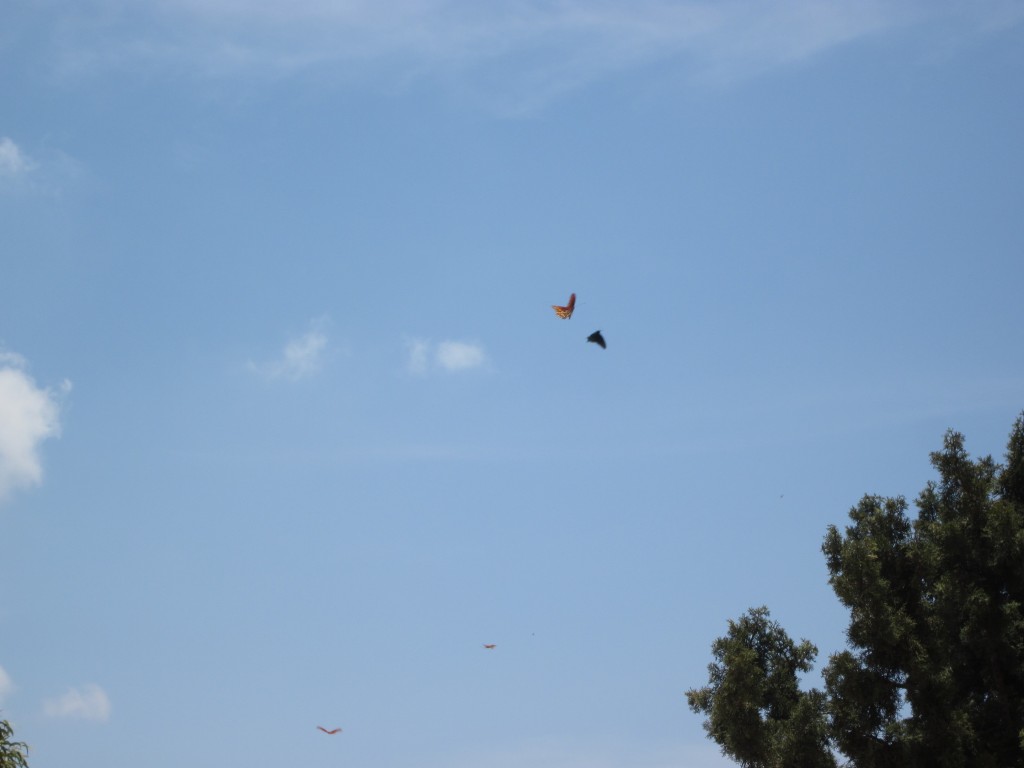

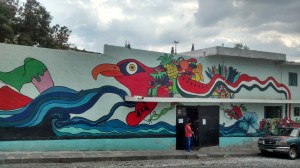
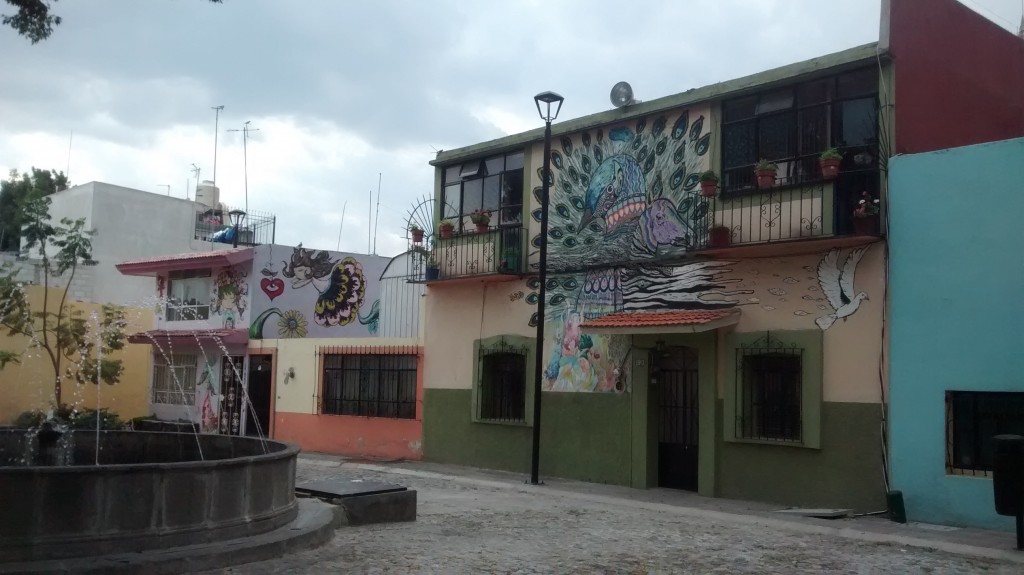
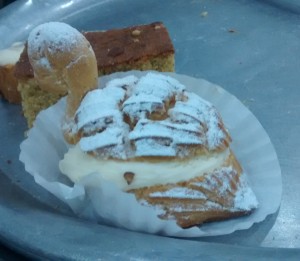
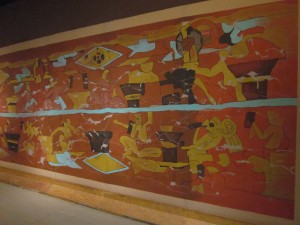

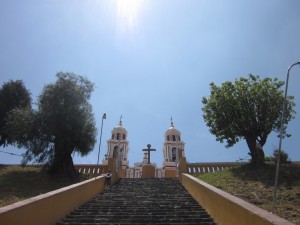
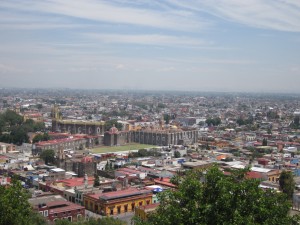
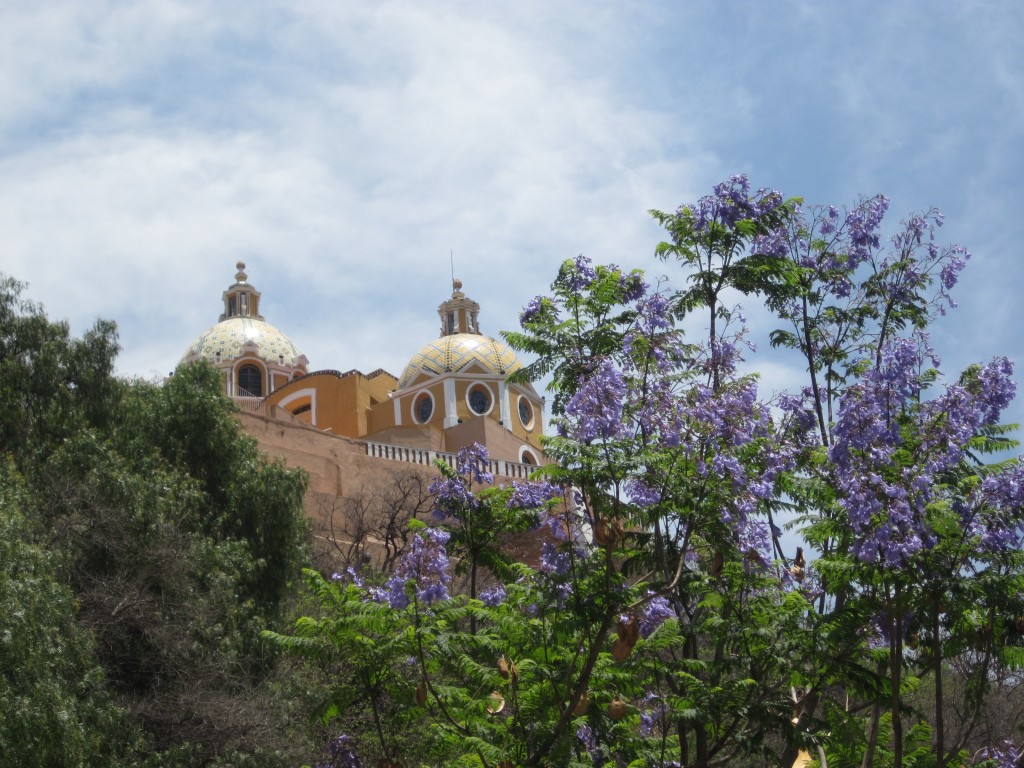 The rest of Cholula is full of brightly coloured buildings, churches that look like
The rest of Cholula is full of brightly coloured buildings, churches that look like 